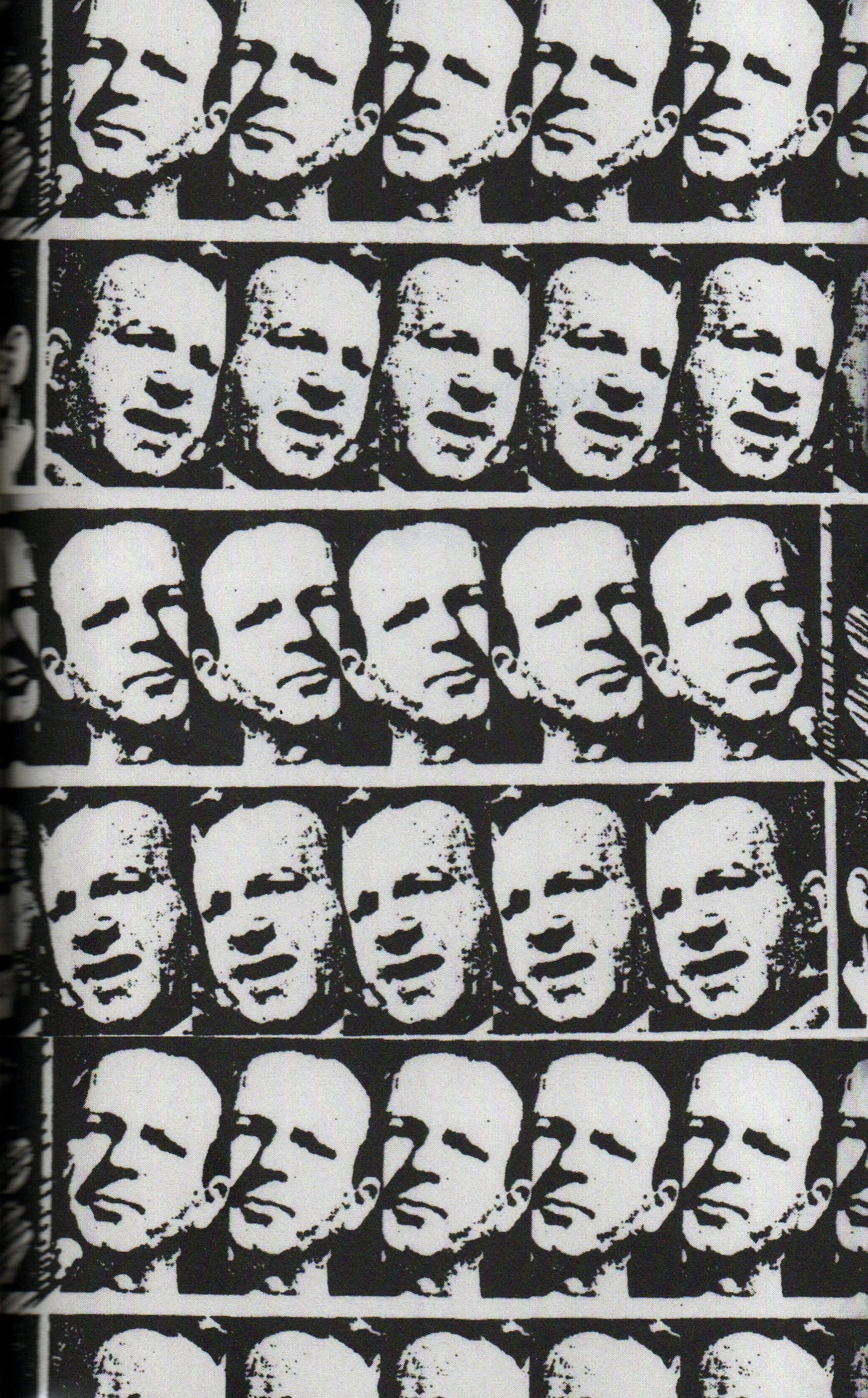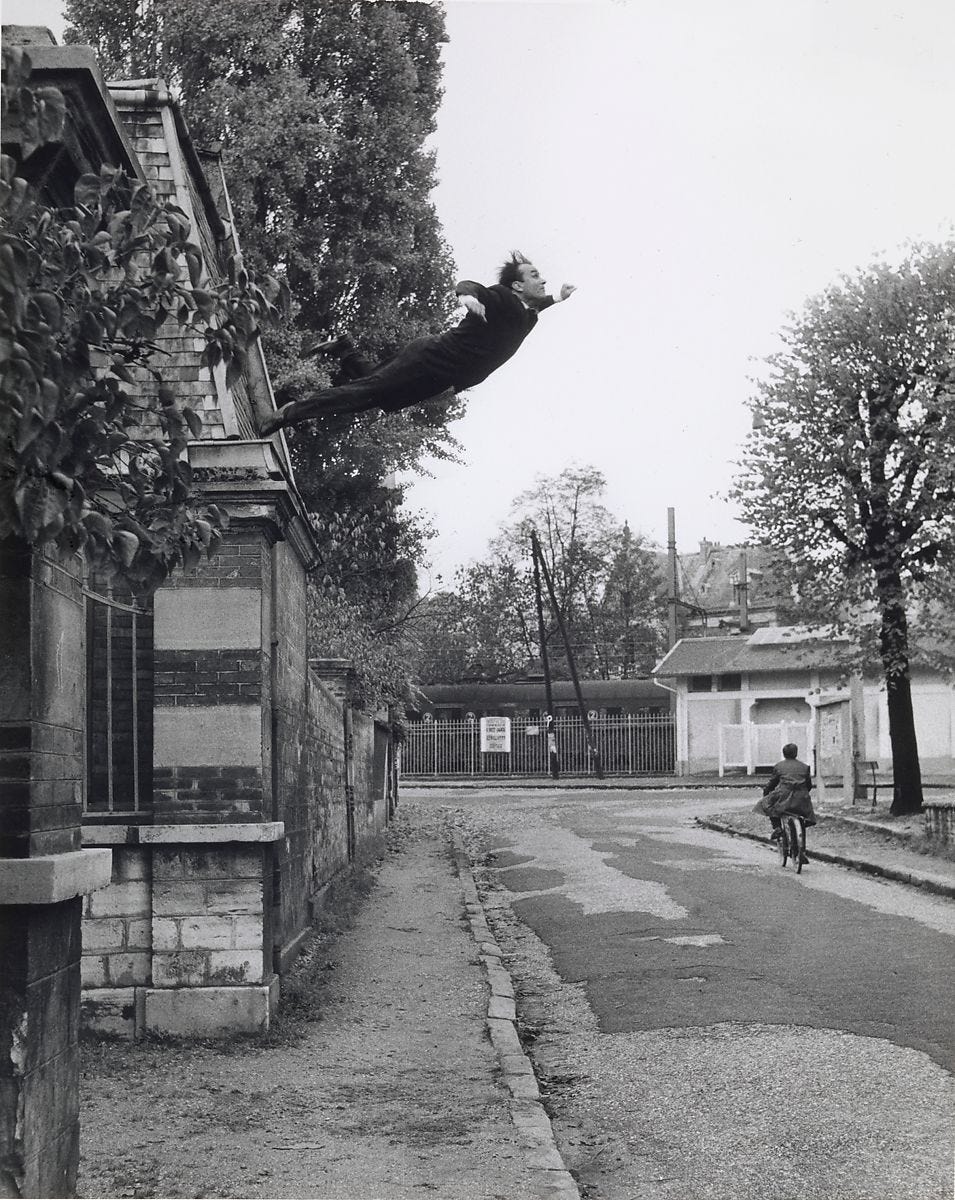Robert Trammell was a poet in Dallas, who described the idea of being a poet in Dallas as “insane”. He was born in 1939 in Dallas and died in 2006. He spent years in prison for marijuana possession (a “crime” that was punished with notorious harshness by Texas in the 60s). He wrote several books of poetry, including Lovers/Killers, Cam I Sole, and George Washington Trammell, and one undefinable work, Jack Ruby & the Origins of the Avant-Garde in Dallas. In 1994 he founded a non-profit literary organization called Wordspace in Dallas, which still exists, and had a small publishing house, Barnburner Press. That’s really about it—he didn’t leave a huge digital footprint. I just read Jack Ruby & the Origins of the Avant-Garde in Dallas: And Other Stories in an edition published by Deep Vellum. They packaged the title work with a lengthy short story cycle about the denizens of a Dallas bar called The Quiet Man, which seems to have been written shortly before Trammell’s death. The two halves are quite distinct in style, but both are deeply involved with Dallas and its history.
One of the dumbest rivalries I know of is the one between Dallas and Houston. They both suck equally. And they are really similar. Among the art community here in Houston, there is a common opinion that Houston is better than Dallas, but I find evidence for this to be pretty thin. Both cities have their strengths and weaknesses that wax and wane over time. Every time I’ve visited Dallas to look at art has been great, but I recognize that this is because by coming from the outside, the art scene in Dallas is essentially new to me. I don’t get that thrill of discovery in Houston all that much anymore.
The cliche of Dallas is that it is more bourgeois than Houston and Houston is more industrial and working class. But if you think of the Dallas metropolitan area as including Fort Worth, there goes the supposed class distinction. Besides, both cities are basically a bunch of suburbs connected by endless freeways and stroads leading to single family homes. I think of Dallas as having a more exciting history—after all, it was the location of a world historical event, the murder of a US president. But is that a real difference? Kennedy could have been shot anywhere, and it seems a bizarre coincidence that he was killed in one of the centers of American ultraright-wing hate. Appropriate, yes, but Lee Harvey Oswald was not part of that crowd.
But one thing Dallas has that Houston doesn’t is an excellent literary publisher. Deep Vellum has dazzled me with their books. A book publisher doesn’t have to specialize in regional authors; many books in Deep Vellum’s catalog are translations—but they have quite a few books by Dallas authors, including poets like Mike Soto, Edyka Chilomé, Sherrie (Candy) Zantea, and Fatima-Ayan Malika Hirsi, journalist Zac Crain, historians Tim Cloward and Jim Schutze, and Robert Trammell.
The first 93 pages of Jack Ruby & the Origins of the Avant-Garde in Dallas are occupied by the title story. When I first saw the title, I assumed it to be a species of punk detournement, taking something that normies view with reverence and solemnity and making fun of it. “The Passion of Christ considered as an uphill bicycle race” by Alfred Jarry (1903) is the great grandfather of this genre. An updated version was published in 1969 by J.G. Ballard called “The Assassination of John Fitzgerald Kennedy Considered As A Downhill Motor Race”. This was how I originally regarded Husker Du’s scabrous cover of “Eight Miles High”—punk rockers taking a mickey out of a beloved hippie classic. But Jarry, Ballard, Husker Du, and Trammell are not merely being punk delinquent vandals; I believe they each had deeper purposes in mind.
Jack Ruby & the Origins of the Avant-Garde in Dallas was originally self-published by Tramell’s imprint, Barnburner Press, in 1987 and revised in subsequent editions. Deep Vellum’s edition is based on a 2001 version. The descriptions they give of these editions make them seem like elaborate zines. And the accompanying illustrations have a zine-like appearance—crummy photocopied collages of well-known photos of Ruby and Oswald.
In 1955, the Dallas Museum of Fine Arts (now the Dallas Museum of Art) started taking down artwork by “communist” artists like Picasso and Diego Rivera in response to protests by the Public Affairs Luncheon Club, a hard-right Dallas women’s club. This is not fiction by Trammell—it actually happened. What Trammell did was to use this incident to give Jack Ruby a motivation to change the reputation of Dallas as an art-hating backwater; he would undertake some earthshaking artistic performance to achieve this.
Ruby was in real life the owner of a strip club, the Carousel Club. He was reputed to have ties to the Chicago mob. Trammell creates a new fictional Carousel Club for Ruby. “Ruby? That guy keeps on talking about the International Avant-Garde said a reporter with UPI. I think he was onto something. He’s got that big empty room behind the dressing room at the Carousel, all painted International Klein Blue with a blown-up photograph on one of the walls of Klein in Flight. It’s like a shrine of some kind.”
Ruby is involved in the art world as well as being a violent, low-level gangster. He wants Dallas to be an art city. “He’d put an end to these small-town Realists’ rough ways. It was time for Dallas to get acquainted with the Twentieth Century. He wanted to do something for the city that would make the Armory Show look like small potatoes.
“France would pay attention.”
What strikes me about this passage is the last sentence. It reflects Dallas’s reputed inferiority complex—always concerned with what New York (or Paris) would think. “When Uncle Bob Thornton was mayor everything came down to dollars and cents. Once when he was trying to raise money for the Symphony a writer for the Dallas Morning News asked him if he’d ever been he said he hadn’t and if he had to he wouldn’t help raise another cent. He called that kind of music The coldest snake I ever touched but he was convinced that a symphony orchestra was absolutely necessary if Dallas was going to be an International City.” I don’t know if Thornton, who was mayor from 1953 to 1961, ever called symphonic music the “coldest snake”, but he did infamously say, “I’ll fight like hell for the symphony just as long as I don’t have to go hear it.”
The story is told in one-page chunks for the most part. It is not a straight-forward prose narrative. Trammell plays with art mythology and Western mythology. “Jack Ruby was like Dallas’s Andy Warhol. Before Andy Warhol was Andy Warhol Jack was ours. Bill said he thought Andy Warhol had gotten lots of his ideas from Jack.” Bill here is Billy the Kid, who instead of dying in a gun battle at the age of 21 survived long enough to become a mentor of sorts to Jack Ruby. When Ruby is formulating plans, he writes to Joseph Beuys for advice. His love for JFK and his desire to put Dallas on the map with a spectacular art action will lead to the explosive conclusion.
Apparently when Trammel published Jack Ruby & the Origins of the Avant-Garde in Dallas, many of his readers were conspiracy nuts. You take sales where you can get them, I guess.
The Quiet Man stories were evidently not published while Trammell was alive. That’s a real shame because they are a great story cycle. The setting for most of them is a bar called The Quiet Man. “The Quiet Man was named for the John Ford/John Wayne fifties movie. It was a great name for a bar but not a great movie.” There are a few recurring characters. Luther is the narrator of several of the stories, and he seems like a stand-in for Trammell himself, including his stint in jail for possession. Oak Cliff Benny is a barfly in a gabardine Burberry raincoat, a regular until he disappears. “He won’t look you straight in the eyes but that is overrated anyway. There is a fine line between being shifty-eyed and being shy.” He is one of H.L. Hunt’s illegitimate sons. Trammell weaves Dallas history through these stories, with appearances by Hunt and Marina Oswald (widow of Lee Harvey Oswald). Oak Cliff Benny loves baseball, rarely talking about anything else. “The only time I’d read the newspaper was during baseball season. If you ask me America started going downhill when football became bigger than baseball.”
“I agree. There is no poetry in football. Football is all prose.”
But because he is an offspring of one of the richest men in the world, those in charge of Hunt’s estate eventually take care of Oak Cliff Benny with a bullet.
The Quiet Man had previously been a bar called the Turf Bar. “While the Turf Bar didn’t sound like something that belonged in Dallas that was not hard because Dallas never knew what belonged in it itself either except money and fashion. It had Neiman Marcus and sports and after that money. It wasn’t even a cowtown. Fort Worth, just thirty miles west, always knew better what it was. It wasn’t afraid of liking Hank Williams. It didn’t have to try to be cultured because it had culture. It didn’t have to make it up. Dallas Mayor Uncle Bob Thornton once said, ‘I’ll give money to the symphony but don’t expect me to go. I went once and let me tell you, it was the coldest snake I ever touched.’ Dallas always wanted to be known as an international city. After Kennedy was killed here, it got its reputation but not what it wanted. It became internationally known as the City of Hate. Oswald and Ruby and a bunch of other conspirators made it happen.” This passage by Trammell sums up what many writers about Dallas have concluded. Whether it’s sportwriters-turned-hippies who moved to Austin (Gary Cartwright and Bud Shrake) or English travel writer Stephen Brook, they come to a similar conclusion. But drive out to the suburbs of Houston or Austin and you’d reach a similar judgment about those cities. (At least I do.)
Trammell uses his prison experiences for some of his characters. In “Rudi”, he writes about an incredibly tough juvenile delinquent who ends up in the hell of the Texas prison system and emerges hard as rock. Trammell uses one of the cutest metaphors I’ve read in a while to describe Rudi. “There was nothing round about his face. It was as full of angles as a geometry book.” He tells the brutal story of Rudi’s life, only to completely switch the location and characters at the end.
His indirect story-telling seems to have derived from his love of Donald Barthelme. Trammell’s fictional equivalent, Luther, says of his time in prison, “For some strange reason the library on his unit was great. He learned that they had bought out all the stock from some bookstore that was closing and took all the books and put them uncensored in his library. Not legally his but they might as well have been. Hardly anybody used it but him. There were Donald Barthelme books.”
Trammell romanticizes Dallas and drinking with a Barthelmean sprinkling on top. The characters in these stories feel very real and well-observed. This is the kind of book that might make you want to be a barfly in some ordinary (but somehow special) neighborhood joint. This is the best collection of short stories I’ve read in a long time.
[Please consider supporting this publication by becoming a patron, and you can also support it by patronizing our online store. And one more way to support this work is to buy books through The Great God Pan is Dead’s bookstore. ]







